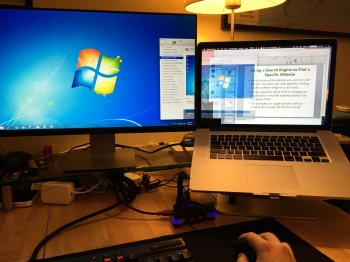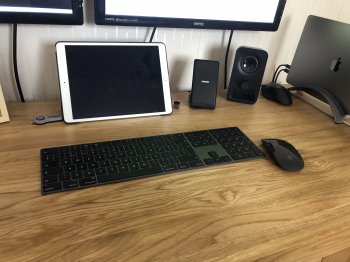What happened at the 4.5 year mark with that one?
Regarding dust inside the MBP being minimal, that makes sense to me and validates my guess that MBP are so closed up tightly, it should be harder for dust to get in. I used an electric duster specifically this one https://www.newegg.com/Product/Product.aspx?Item=N82E16896367002 to clean the PC components, it's powerful and really gets the job done, it beats paying $10/can of compressed air. With the MBP I'm not so sure I can use it as this thing will make the fans spin with great speed, so don't know if the laptop could handle it.
I'm definitely not going to be babyin'g it day in day out, just taking some precautions every 6 months and maybe blow some air through the vents to get even that thin film of dust out.
Regarding battery, I read in the apple community forum someone had good success with discharging their laptop to 35% or so then reconnecting it back up to the charger and he said his battery hast lasted a few years with good efficiency still. Seems kind of annoying to do every 2 weeks though.
[doublepost=1488252277][/doublepost]
I plan to be using it in the vertical position like this. I don't like many monitors as I said before, it's distracting but since it is smaller maybe there can be some use of it. Is it me or is this stand blocking the back vents?
There can be some benefits

You don't need to discharge to 35% simply to discharge. This increases wear on lithium batteries. The only reason such discharge cycles would be used with common lithium cells are if it is required for calibration, and I don't think Apple batteries have required calibration since like a decade ago!
http://batteryuniversity.com/learn/article/how_to_prolong_lithium_based_batteries
Similar to a mechanical device that wears out faster with heavy use, the depth of discharge (DoD) determines the cycle count of the battery. The smaller the discharge (low DoD), the longer the battery will last. If at all possible, avoid full discharges and charge the battery more often between uses. Partial discharge on Li-ion is fine. There is no memory and the battery does not need periodic full discharge cycles to prolong life. The exception may be a periodic calibration of the fuel gauge on a smart battery or intelligent device.
Environmental conditions, not cycling alone, govern the longevity of lithium-ion batteries. The worst situation is keeping a fully charged battery at elevated temperatures. Battery packs do not die suddenly, but the runtime gradually shortens as the capacity fades.
Lower charge voltages prolong battery life and electric vehicles and satellites take advantage of this. Similar provisions could also be made for consumer devices, but these are seldom offered; planned obsolescence takes care of this.
A laptop battery could be prolonged by lowering the charge voltage when connected to the AC grid. To make this feature user-friendly, a device should feature a “Long Life” mode that keeps the battery at 4.05V/cell and offers a capacity of about 80 percent. One hour before traveling, the user requests the “Full Capacity” mode to bring the charge to 4.20V/cell.
The question is asked, “Should I disconnect my laptop from the power grid when not in use?” Under normal circumstances this should not be necessary because charging stops when the Li-ion battery is full. A topping charge is only applied when the battery voltage drops to a certain level. Most users do not remove the AC power, and this practice is safe.
Modern laptops run cooler than older models and reported fires are fewer. Always keep the airflow unobstructed when running electric devices with air-cooling on a bed or pillow. A cool laptop extends battery life and safeguards the internal components. Energy Cells, which most consumer products have, should be charged at 1C or less. Avoid so-called ultra-fast chargers that claim to fully charge Li-ion in less than one hour.




